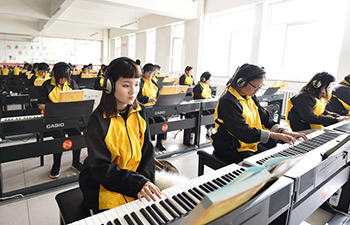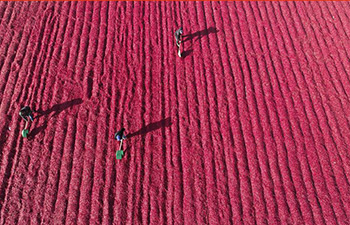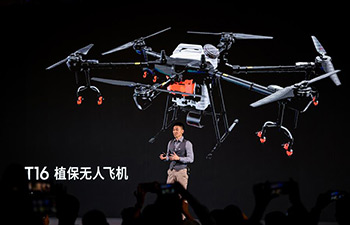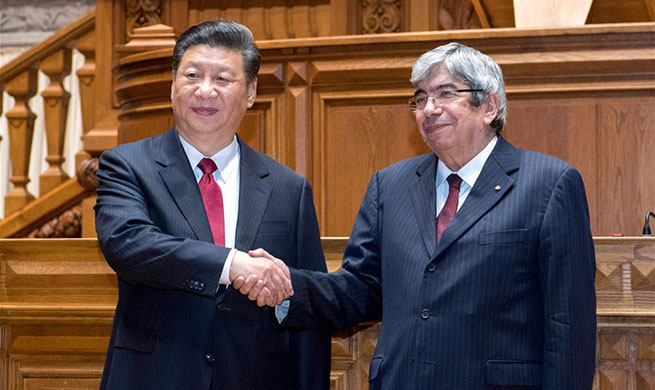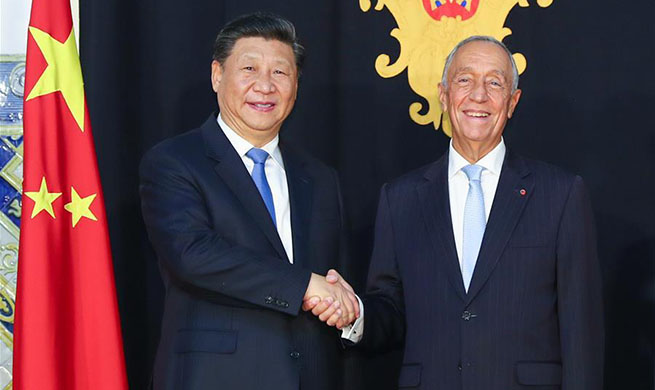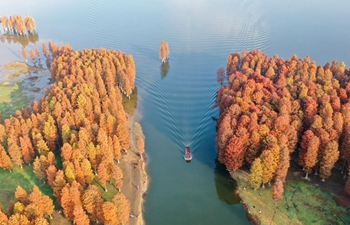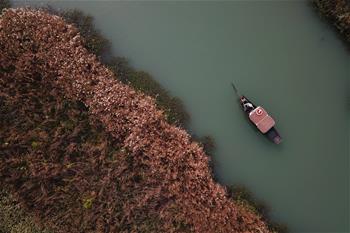NANJING, Dec. 6 (Xinhua) -- Why do some brains discover the laws of universe, while others create soul-stirring music or paintings? How is memory and consciousness generated?
We can observe billions of stars and detect ripples in space, but we still barely understand our brains, which can fathom the universe.
Their sophisticated structure and the number of neurons are only estimates.
Now Chinese scientists are planning to draw the clearest yet three-dimensional map of the intricate neurons and blood vessels in the human brain.
This ambitious project is like taking 3D photos of a huge forest of nearly 100 billion trees, seeing not only the whole forest, but also every twig and leaf on each tree.
"Our current methods cannot see both the trees and the forest. We aim to develop new methods to obtain a high-resolution map to see clearly how the neural network is connected," said Luo Qingming, leader of the research.
Luo, president of Hainan University and chief scientist of the Suzhou Institute for Brainsmatics of the Huazhong University of Science and Technology (HUST), in east China's Jiangsu Province, said the research will help in analyzing the mechanisms of brain diseases, and promote the development of artificial intelligence.
"The continuous changes of neural networks and brain activities pose great challenges to the analysis of brain functions. But we believe that brain functions and activities depend on the basic cells, just as a circuit network depends on its basic unit - the electronic components," said Luo.
"Different types of neurons are the basis for the analysis of brain functions and for the diagnosis and treatment of brain diseases," he said.
Luo, 52, was born in rural Qichun County, central China's Hubei Province. At middle school, he had to study by the light of a kerosene lamp. He still has a scar on his hand from an accident of chopping firewood after school to help feed his family.
In the 1990s, Luo was a photoelectron researcher in the United States and was the first-ever person to succeed in measuring brain activity by means of near-infrared optical imaging. His technology was awarded a U.S. patent.
However, he left the high-quality research conditions abroad and returned to China to work in his alma mater, HUST, in 1997.
"I feel that I should contribute to my country," said Luo, who launched his project with a starting budget of just 200,000 yuan (about 30,000 U.S. dollars) and a lab of 25 square meters.
Brain imaging is extremely difficult, as it requires expertise in different disciplines.
"The brain is as soft as bean curd. It is difficult to fix brain samples and mark the nerves and blood vessels inside. It took us three years to solve that problem," Luo said.
"We need researchers with different academic backgrounds, such as biologists and chemists to prepare brain samples, engineers and technicians with optical, mechanical and control technology to develop the imaging instruments, and computer talents to process data and display the results."
The team took eight years to develop a brain-imaging instrument with independent intellectual property rights.
The achievement was published on the journal, Science, at the end of 2010, and was ranked as one of the top 10 scientific advances in China in 2011.




